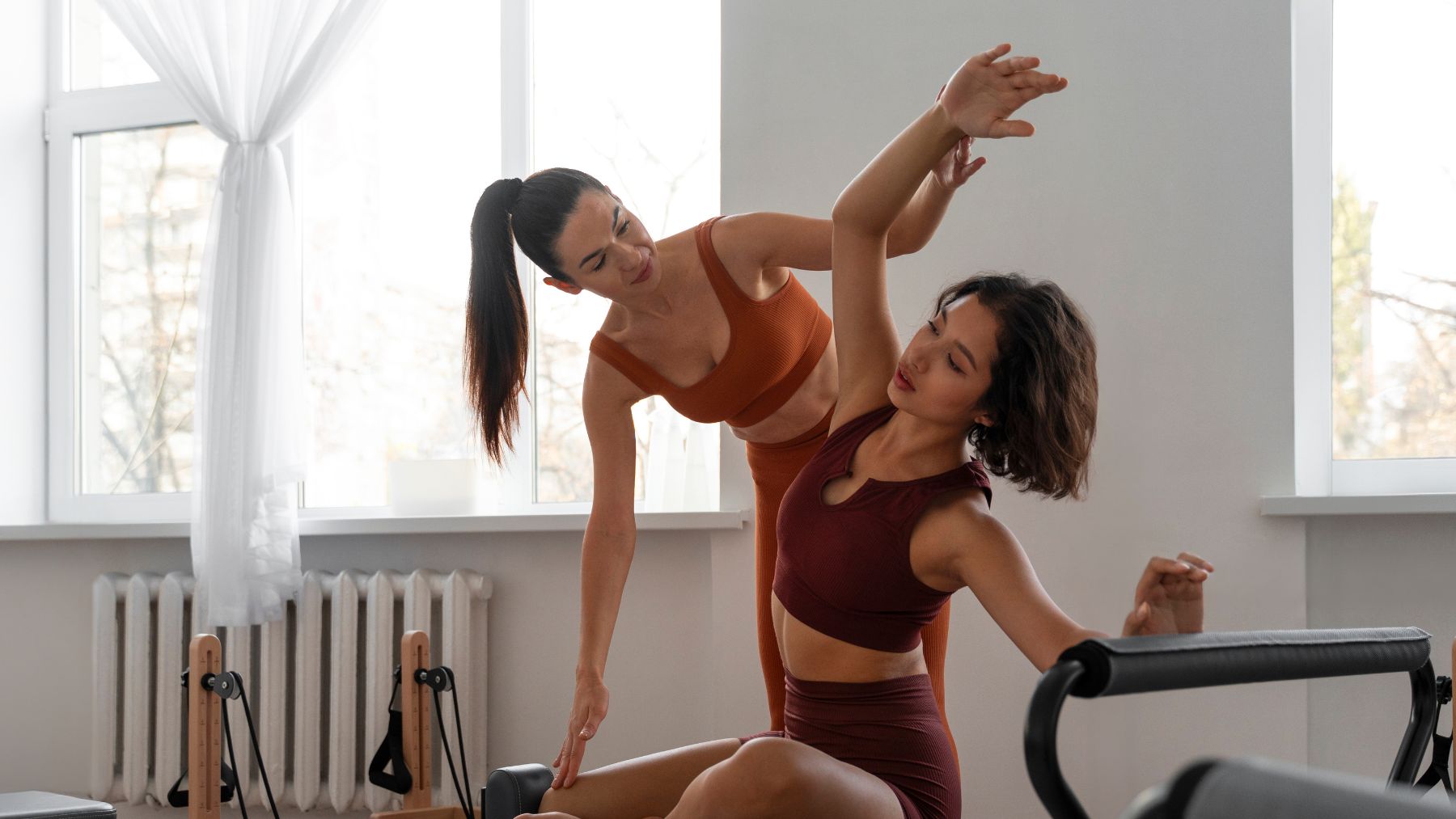Pilates has become one of the most popular fitness trends of the year, drawing attention for its combination of mindful movement, core strength, and posture improvement. Whether practiced on a reformer machine or a simple exercise mat, this low-impact discipline challenges both body and mind through slow, controlled movements.
However, beginners often underestimate how technical Pilates can be. Understanding what to expect before that first class — from the different types of sessions to the importance of breathing — can make the experience more effective and enjoyable.
1. Choose the right type of class
Pilates comes in two main forms: reformer Pilates and mat Pilates. While both strengthen the body through controlled resistance, the approach and equipment differ. Reformer Pilates uses a specialized frame with a moving carriage and adjustable springs to add or reduce resistance. Participants may also use straps, pulleys, or rings to target specific muscle groups.
Mat Pilates, on the other hand, is performed on an exercise mat and typically incorporates light tools such as resistance bands, rings, or ankle weights. It’s more affordable and accessible, making it an ideal starting point for beginners. However, those with prior training experience can also explore entry-level reformer classes. Experts recommend reading class descriptions carefully and consulting instructors to find the best match based on fitness level and goals.
2. Understand the workout’s intensity
Although Pilates doesn’t usually involve high-intensity bursts or heavy sweating, that doesn’t mean it’s easy. The method focuses on endurance, stability, and precision rather than speed or maximum effort. Through small, repetitive movements and sustained muscle engagement, the body develops strength, mobility, and balance over time.
Each exercise emphasizes posture, alignment, and control while maintaining tension in the muscles — a technique known as “time under tension.” This approach improves coordination, flexibility, and total-body awareness. Beginners should manage expectations: Pilates isn’t about exhaustion but about building strength from within. The results often appear gradually, as consistency helps improve tone, stability, and core activation.
3. Master the art of breathing
Breathing is one of the six key principles of Pilates, along with concentration, control, precision, center, and flow. Proper breathing supports movement, helps maintain alignment, and enhances muscle engagement. Instructors typically guide participants to breathe deeply into the ribcage — expanding the sides and back of the torso rather than just the belly — and then exhale to draw the ribs together.
This technique activates the “powerhouse” muscles between the pelvis and ribcage, which form the foundation of core stability. Learning to coordinate breath with movement allows for greater control, reduces tension, and protects the lower back during exercises.
Building strength through mindful movement
Pilates offers more than just physical benefits. The practice improves body awareness, coordination, and posture, creating a balanced foundation for other forms of exercise such as running, yoga, or weight training. Regular practice can increase flexibility and strength without putting strain on the joints, making it suitable for a wide range of fitness levels.
While Pilates may not appeal to everyone’s preferred workout style, many discover its slower pace helps counterbalance the stress of high-intensity routines. Over time, consistent sessions can lead to noticeable improvements in strength, stability, and overall movement quality.
For beginners, the key is to start gradually, stay patient, and focus on technique rather than speed. With steady practice, Pilates becomes not only a workout but a long-term investment in better balance, posture, and physical resilience.

